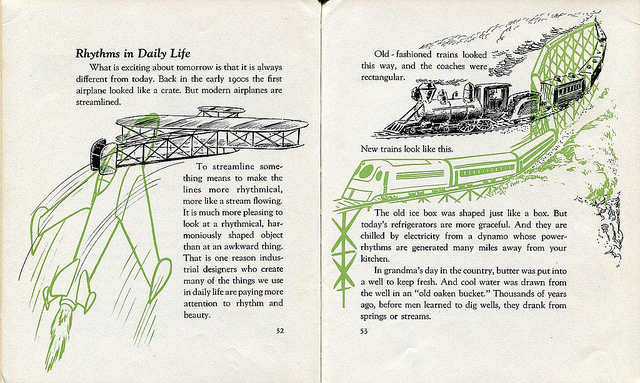
If you have to ask what jazz is, Louis Armstrong supposedly said, you’ll never know. But the poet Langston Hughes, who in his 1955 First Book of Jazz reveals himself as a great enthusiast of Armstrong indeed, seems to have operated on a very different premise. Hughes pitched that book, which we featured last month, toward children, an audience that, at their best, embodies inquisitiveness: they have to ask what everything is. And before Hughes could explain jazz to them, he had to explain rhythm.

“Rhythm is something we share in common, you and I,” Hughes writes in 1954’s The First Book of Rhythm, “with all the plants and animals and people in the world, and with the stars and moon and sun, and all the whole vast wonderful universe beyond this wonderful earth which is our home.” It doesn’t just belong in music, he says; it belongs pretty much everywhere, from the realm of nature to those of athletics, machines, furniture — everything in “this wonderful world,” in his view, has its own rhythm.

If explaining jazz to kids strikes you as a daunting task, then just imagine explaining this more abstract foundational quality of jazz, finding it in a host of different domains, and then laying it all out in terms that will engage an elementary schooler. But only such a master of language and lover of sound like Hughes could do it with such overall vitality and concision, even if the subject, as Ariel S. Winter writes at We Too Were Children, Mr. Barrie, moves Hughes to get “too lyrical, too abstract, caught up in his song of the world,” somehow drifting from an observation of the rhythm of knitting needles to the conclusion that everyone “should arrange her hair to suit the shape of her face.”

You can read The First Book of Rhythm in its entirety, and gaze upon Robin King’s detailed and well-integrated illustrations, in this Flickr photo set. (You can also buy old copies on Amazon.) Perhaps you once wrote yourself off as hopelessly rhythmless, unable even to say for sure that you know what rhythm is. If so, Langston Hughes has written the book for you — no matter your age, just your curiosity.

Related Content:
Langston Hughes Presents the History of Jazz in an Illustrated Children’s Book (1955)
Watch Langston Hughes Read Poetry from His First Collection, The Weary Blues (1958)
Charles Mingus Explains in His Grammy-Winning Essay “What is a Jazz Composer?”
Colin Marshall hosts and produces Notebook on Cities and Culture as well as the video series The City in Cinema and writes essays on cities, language, Asia, and men’s style. He’s at work on a book about Los Angeles, A Los Angeles Primer. Follow him on Twitter at @colinmarshall or on Facebook.


Splendid stuff! Only d great and versatile Langston Hughes could zone-in and sum it up so well,for children and even ‘grown-ups’ like us!
Are the Hughes and Mingus books in print — at a reasonable price? If not, THEY SHOULD BE!